TO
| Creator | Title | Description | Subject | Date | ||
|---|---|---|---|---|---|---|
| 1 |
 | Roundy, Shadrach J. | A cost-effective planar electromagnetic energy harvesting transducer | This paper presents a planar multi-pole electromagnetic energy harvesting transducer. We report on the design, manufacture, and performance results of integrated devices based on this transducer. The transducer leverages recent advancements in the manufacture of multi-pole magnets and can be impleme... | 2012-01-01 | |
| 2 |
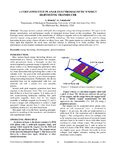 | Roundy, Shad | A Cost-effective Planar Electromagnetic Energy Harvesting Transducer Technical Digest PowerMEMS 2012 (Atlanta, GA USA 2-5 December 2012) | 2012-12-05 | ||
| 3 |
 | Jayamohan, Harikrishnan | Applications of microfluidics for molecular diagnostics | Diagnostic assays implemented in microfluidic devices have developed rapidly over the past decade and are expected to become commonplace in the next few years. Hundreds of microfluidics-based approaches towards clinical diagnostics and pathogen detection have been reported with a general theme of ra... | Microfluidics; Micro-total-analysis-systems; Lab-on-a-chip; Point-of-care devices; Sample preparation; MEMS; Rapid prototyping; Biomarker detection; Personalized medicine; Global health care | 2012-11-04 |
| 4 |
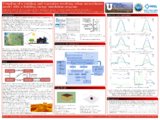 | Bianchi, Carlo | Coupling of building and vegetation resolving urban microclimate model with a building energy simulation program | The objective of this work is to develop and validate a coupled fast-running Building Energy Modeling/Microclimate model for use in developing site-specific design strategies which minimize energy and water use All the micro-climate variables affecting the building energy consumption, such as solar ... | Building energy modeling; Urban; Microclimate; Simulation; Energy; Environment | 2018-08 |
| 5 |
 | Gale, Bruce K. | Cyclical magnetic field flow fractionation | In this study, a new magnetic field flow fractionation (FFF) system was designed and modeled by using finite element simulations. Other than current magnetic FFF systems, which use static magnetic fields, our system uses cyclical magnetic fields. Results of the simulations show that our cyclical mag... | 2012-01-01 | |
| 6 |
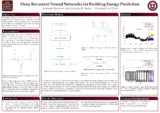 | Rahman, Aowabin | Deep recurrent neural networks for building energy prediction | This poster illustrates the development of a deep recurrent neural network (RNN) model using long-short-term memory (LSTM) cells to predict energy consumption in buildings at one-hour time resolution over medium-to-long term time horizons ( greater than or equal to 1 week). | Machine learning; Energy; Building energy modeling; Deep learning; Recurrent neural networks; Prediction | 2017-01-13 |
| 7 |
 | Bianchi, Carlo | Energy demands for commercial buildings with climate variability based on emission scenarios | The impacts of a changing climate are wide-ranging in both impact and scope. This paper investigates the effect that realistic climate variability would have on building energy demands in Salt Lake City, UT to inform planning for air quality impacts. Energy demand scenarios were derived using climat... | BEM; EnergyPlus; Emissions; Climate; Energy | 2017 |
| 8 |
 | Legorburu, Gabriel | Energy modeling framework for optimizing heat recovery in a seasonal food processing facility | Societal, cultural and economic factors are driving food processors to reduce energy consumed per unit mass of food. This presents a unique problem because time variant batch processing using low to medium grade heat is common in food production facilities. Heat recovery methods may be implemented b... | Energy efficiency; Food industry; Heat recovery; Optimization; Simulation | 2018-07-20 |
| 9 |
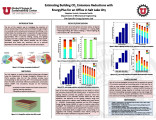 | Lucich, Stephen; Smith, Amanda | Estimating building CO2 emissions reductions with EnergyPlus | The aim of this research is to investigate the potential to reduce greenhouse gas (GHG) emissions from the buildings sector in the Salt Lake Valley by altering the operational strategies of existing buildings. Air quality efforts typically focus on reducing emissions from transportation and industri... | Building energy modeling, Energy efficiency, HVAC, Greenhouse gas emissions | 2014-02-07 |
| 10 |
 | Thomas, Tran T. D. | Evaluation of renewable energy technologies and their potential for technical integration and cost-effective use within the U.S. energy sector | Energy demands, environmental impacts of energy conversion, and the depletion of fossil; fuels are constant topics of discussion in the energy industry. Renewable energy technologies; have been proposed for many years to address these concerns. However, the transformation; from traditional methods o... | Renewable energy; Power generation; Electrical grid; Emerging energy systems; System integration | 2017-07 |
| 11 |
 | Colter, Jourdan; Wirostko, Barbara; Coats, Brittany | Finite element design optimization of hyaluronic acid-based hydrogel drug delivery device for improved retention | Drug-loaded hydrogel devices are emerging as an effective means of localized and sustained drug delivery for the treatment of corneal conditions and injuries. One such device uses a novel, thiolated crosslinked carboxymethylated, hyaluronic acid-based hydrogel (CMHA-S) film to deliver drug to the oc... | Ocular drug delivery; CMHA-S; antibiotics; ophthalmology; computation | 2018 |
| 12 |
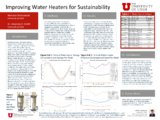 | Malinowski, Nicholas | Improving water heaters for sustainability | Buildings use about 40% of the total U.S. energy demand. Water heaters provide hot water for a variety of building uses including sinks, showers, dishwashers, washing machines, and space heating. Water heaters are the second most energy intensive appliances in a common household. Typically a home... | Water heaters; Energy efficiency; Electricity; Emissions; Natural gas | 2018 |
| 13 |
 | Tran, Thomas T.D. | Incorporating performance-based global sensitivity and uncertainty analysis into LCOE calculations for emerging renewable energy technologies | Assessing system costs for power generation is essential for evaluating the economical aspect of energy resources. This paper examines traditional and renewable energy resources under uncertainty and variability of input variables. The levelized cost of electricity (LCOE) of each technology is compu... | Renewable energy technologies; LCOE levelized cost of electricity | 2018-02-14 |
| 14 |
 | Didier, Richard C. | Linking microclimate and energy use with a low cost wall mounted measurement system | Urban microclimate plays a critical role in overall urban energy demand and efficiency. At the building scale, energy use and internal conditions are directly impacted by local microclimate. The direct link between building energy use and local microclimate is through building envelope heat fluxes. ... | Microclimate; Energy; Temperature; Humidity; Arduino; EnergyPlus | 2016-06 |
| 15 |
 | Roundy, Shadrach J. | MEMS testing: transition from millions to billions to trillions | Sensors, specifically MEMSbased, have created multiple market tornados over the past 40 years. Most recently there has been a market explosion driven by the widespread adoption of MEMS sensing devices in mobile consumer applications. In the past 5 years the worldwide market has grown from roughly 10... | 2012-01-01 | |
| 16 |
 | Adams, Daniel | Microbial production of methane and carbon dioxide from lignite, bituminous coal, and coal waste materials | The aim of this study was to examine microbial methane and CO2 production from bituminous coal waste, lignite, and bituminous coal materials. Bituminous coal and coal waste material were obtained from a Utah mine and lignite was obtained from a commercially available North Dakota sample. Microbial p... | 2012-01-01 | |
| 17 |
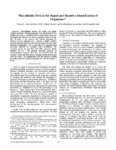 | Gale, Bruce K. | Microfluidic devices for rapid and sensitive identification of organisms | Microfluidic devices for rapid and highly sensitive detection of living organisms were developed for two applications. First, a zebrafish embryo genotyping system was developed and shown to be able to genotype embryos in the first 48 hours of the embryos life without damaging the embryos in any a... | 2014-01-01 | |
| 18 |
 | Smith, Amanda D. | Modeling two-phase flow and vapor cycles using the generalized fluid system simulation program | This work presents three new applications for the general purpose fluid network solver code GFSSP developed at NASA's Marshall Space Flight Center: (1) cooling tower, (2) vapor-compression refrigeration system, and (3) vapor-expansion power generation system. These systems are widely used across eng... | Modeling; Fluid systems; Cooling tower; Vapor compression refrigeration, vapor power cycle | 2017-09 |
| 19 |
 | Harman, Todd B. | Multiscale modeling of accidental explosions and detonations | Accidental explosions are exceptionally dangerous and costly, both in lives and money. Regarding worldwide conflict with small arms and light weapons, the Small Arms Survey has recorded more than 297 accidental explosions in munitions depots across the world that have resulted in thousands of deaths... | 2013-01-01 | |
| 20 |
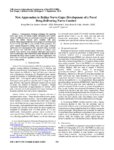 | Gale, Bruce K. | New approaches to bridge nerve gaps: Development of a novel drug-delivering nerve conduit | Contemporary bridging techniques for repairing nerve gaps caused by trauma require autologous nerve grafts, which are difficult to harvest and handle and result in significant donor site deficit. Several nerve conduits with axon growth-enhancing potential have been proposed, developed and tested ove... | 2012-01-01 | |
| 21 |
 | Jayamohan, Harikrishnan | Novel titania nanotube based electrochemical detection in micrototal analysis system | We report the modification of titania (TiO2) nanotubes for quantitative electrochemical (EC) detection of biomolecules on a microfluidic platform. | Microfluidics; Titania nanotubes; Electrochemical detection | 2015 |
| 22 |
 | Smith, Amanda D. | Performance modeling and parametric study of a stratified water thermal storage tank | Thermal energy storage (TES) can significantly increase the overall effciency and operational flexibility of adistributed generation system. A sensible water storage tank is an attractive option for integration in building energy systems, due to its low cost and high heat capacity. As such, this pap... | 2016-02-13 | |
| 23 |
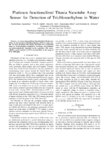 | Gale, Bruce K. | Platinum functionalized titania nanotube array sensor for detection of Trichloroethylene in water | A sensor using platinum functionalized titania nanotubes for the detection of Trichloroethylene (TCE) in water samples has been developed. The titania nanotubes were synthesized using an electrochemical anodization technique and platinum was photocatalytically deposited on the nanotubes. The sensor ... | 2013-01-01 | |
| 24 |
 | Rahman, Aowabin | Predicting electricity consumption for commercial and residential buildings using deep recurrent neural networks | This paper presents a recurrent neural network model to make medium-to-long term predictions, i.e. time horizon of ≥ 1 week, of electricity consumption profiles in commercial and residential buildings at one-hour resolution. Residential and commercial buildings are responsible for a significant fr... | Building Energy Modeling; Machine learning; Recurrent neural networks; Deep learning; Electric load prediction | 2017 |
| 25 |
 | Rahman, Aowabin | Predicting fuel consumption for commercial building with machine learning algorithms | This paper presents a modeling framework that uses machine learning algorithms to make longterm, i.e. one year-ahead predictions, of fuel consumption in multiple types of commercial prototype buildings at one-hour resolutions. Weather and schedule variables were used as model inputs, and the hourly ... | Building energy modeling; Machine learning; Prediction; Heating load; Data-driven modeling | 2017-08 |
